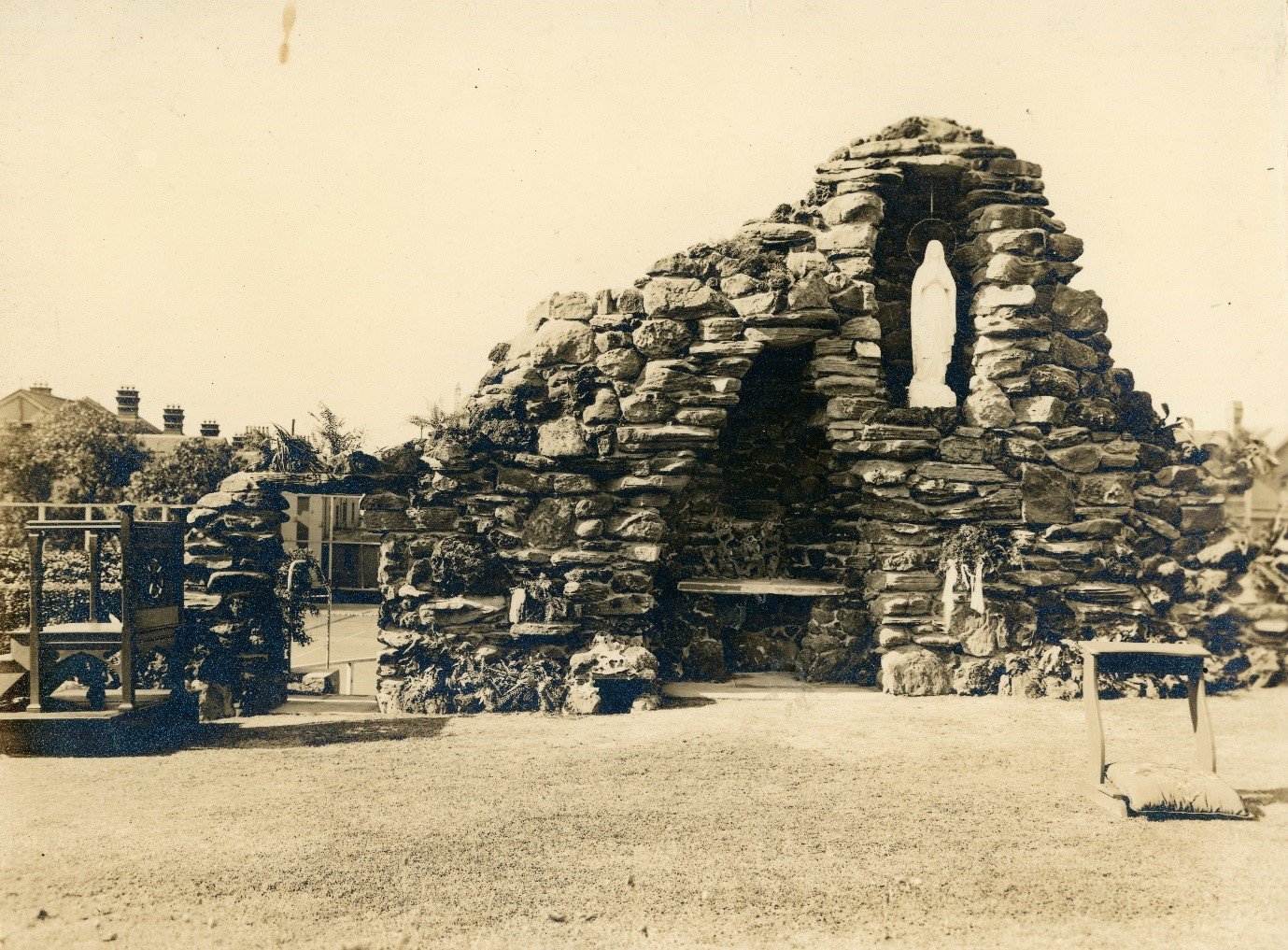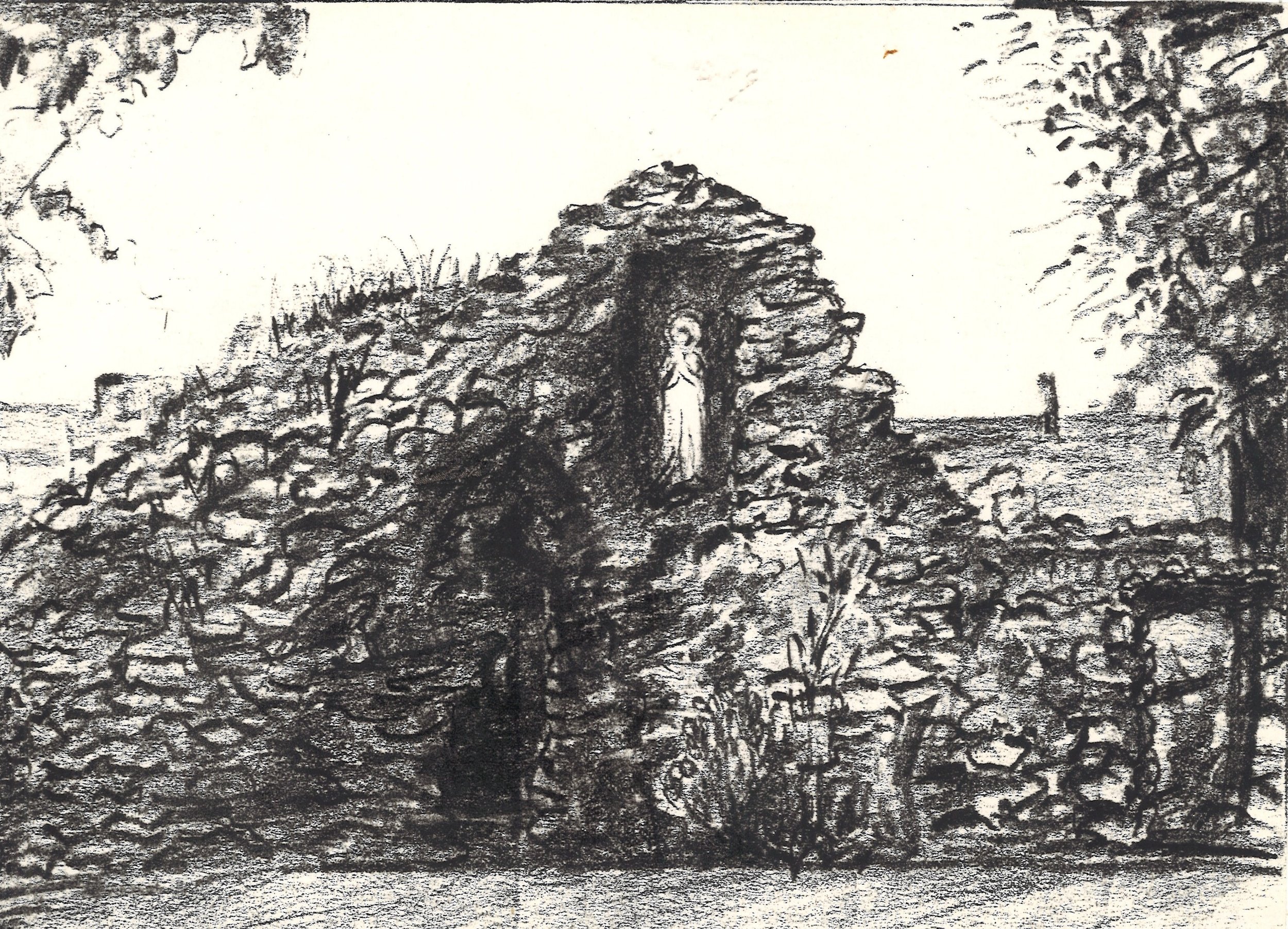Celebrating cultural heritage




Grottoes: sites of spiritual meaning
Archives Collections Registrar, Imogen Kennard-King
On 18th April each year the International Council on Monuments and Sites (ICOMOS), a global organization focused on the protection and celebration of cultural heritage places, marks The International Day for Monuments and Sites, also known as World Heritage Day. This day encourages individuals and organisations around the world to recognise and appreciate surrounding cultural heritage sites, and to think actively about their preservation. Heritage sites can take a large variety of forms, from pyramids to palaces, statues, or shipwrecks. One criterion used to measure the cultural significance of a site or place is the spiritual importance and connection a site has to a community of people.
Grottoes are an example of a cultural heritage site with deep historical and spiritual connections to the Sisters of Charity. A grotto is a cave-like rock formation, either naturally occurring or man-made. In a religious context, grottoes act as shrines and have a rich history as sites of pilgrimage, contemplation, and remembrance. This history is certainly reflected in the many grottoes that feature in Sisters of Charity convents, schools, and other facilities.
One such grotto still stands today within the grounds of St Vincent’s College, Potts Point. It was not the first to be built within the grounds of the College and the associated St Vincent’s Convent. The current grotto was built in 1924 and blessed by Fr Peter Murphy on 9th November. It was designed as a replica of the grotto at Lourdes in France and was constructed using Hawkesbury sandstone and honeycomb rock sourced from Bronte. It cost £100 to build, which was paid by Mr Clement Burchell Benbow, a prominent Sydney dentist whose daughter attended the College. This 1924 grotto has also changed over its almost one-hundred-year life. Features such as five stone archways which represented the five mysteries of the rosary, and a pond which was a later addition have come and gone. Water is often a feature of Lourdes-style grottoes, a tribute to the natural stream and spring which were integral parts of the apparitions of Mary seen by Bernadette Soubirous at the Lourdes grotto in 1858. This structure is often referred to in historical records as the College Grotto.
The original Convent Grotto was built in 1893 and was blessed by Cardinal Moran, Archbishop of Sydney, on 13th March 1893. It was also intended to mirror the style of the Lourdes grotto, however visually, it was quite different to the structure we see today. The location of the original grotto is recorded as outside the lower tennis court, where the College swimming pool is now situated. Sometime after the construction of this grotto a plaque was added to a statue within the site commemorating College student, Marion Agnes McNamee, who passed away in 1898. Marion had tended to the grotto during her time as a student.
While historical records differ regarding when the original grotto was demolished, some suggest it was dismantled in 1938 while others imply it existed until the 1970s, meaning the two grottoes would have coexisted for a period. Following the demolition of the original structure , the College and the Convent shared the current grotto.
The two grottoes which have existed within the grounds of St Vincent’s College, Potts Point are just a small sampling of the sacred grottoes featured at many sites associated with the Sisters of Charity. Grottoes can be found in schools, hospitals, and convents, offering a place for prayerful contemplation amongst often bustling surroundings. Monte Oliveto Convent at Edgecliff has been continuously occupied by the Sisters for over 100 years and it too has a grotto of its own. This example was built in the early 1950s by the Beaumont family in memory of their mother. Such examples are not limited to Sydney – a beautiful, uniquely Fijian grotto existed on the site of St Teresa’s Novitiate at Cawaci, on the island of Ovalau, Fiji where The Sisters of Charity worked with the Sisters of Our Lady of Nazareth from 1957 to 1966. Surrounded by a floral garden and decorated with mosaics and large seashells, the grotto at St Teresa’s is emblematic of how sites and places can be embedded with spiritual and cultural meaning, making them particularly special to a group of people. The acknowledgement and preservation of such sites ensures they can be enjoyed for generations to come.
All images are courtesy of the Congregational Archives of the Sisters of Charity of Australia.

